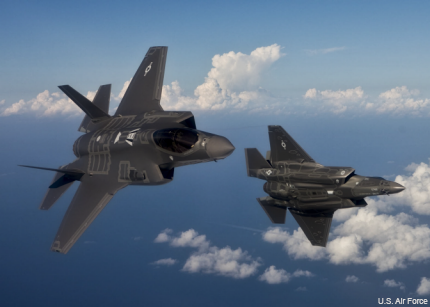Air Force’s 30-year plan seeks 'strategic agility'
The service sees its biggest challenge as adapting and responding to change at a rate faster than its adversaries can, the new strategy document says.

The Air Force will be looking to become more agile to deal with future challenges and an increasing rapid rate of change, according to a new strategy document released July 30.
“America’s Air Force: A Call to the Future,” the first of three documents to be released with the purpose of providing a framework for guiding the service’s planning and budgeting for several decades, provides a general roadmap for what the Air Force will be seeking in the next 30 years.
The service also will release a 20-year resource-informed “strategic master plan” by the end of the year, and eventually a 10-year balanced budget that will be based on fiscal projections, according to an Air Force release.
In terms of defining trends of the future, the Air Force sees geopolitical instability, coupled with rapidly emerging technological advances, as challenges that the service would be equipped to address. Meanwhile, the importance and vulnerability of global commons such as air, space and cyberspace will continue to grow, meaning that the Air Force will be tackling a wider range of operating environments.
The greatest challenge over the next 30 years, however, is the Air Force’s ability to adapt and respond to change at a rate faster than its adversaries can, the report says.
To do so, the Air Force will be looking to increase its “strategic agility,” becoming more flexible, adaptable and responsive as an institution.
In terms of technology, this means improving capability development by increasing agility in the process – requiring closer relationships between science and technology, acquisitions and requirements. The Air Force envisions the inclusion of more “pivot points,” or opportunities to change or abandon a program, as well as more rapid prototyping.
“To the extent that our current policies and regulations can be modified to change the paradigm from large, complex programs rife with crippling interdependencies to programs with simple, severable components, open architectures and more distributed participation, we will enact those changes,” the report reads.
By building systems that are capable, affordable and exportable, the Air Force can simultaneously strengthen its defense capabilities at lower cost and increase transparency and interoperability with its most trusted allies and partners, according to the document.
Those attributes will gain increasing importance as the Air Force continues to maintain its technological edge over adversaries. The report highlights several promising “game-changing technologies,” such as hypersonic weapons, nanotechnology, directed energy weapons, unmanned systems and autonomous systems, but the report acknowledges that the list is not exhaustive.
Finally, the report highlights that the Air Force will also look to broaden its relationship with industry by improving understanding of requirements and enhancing competition, with the hope that unwieldy acquisition processes might be exposed. The service will also continue to engage with non-traditional providers for increased innovation.
“In addition to strategic agility, our nation demands an Air Force capable of harnessing diverse ideas and perspectives. Diversity, total force integration, and building internal and external partnerships provide the nation with the Air Force it expects, deserves, and needs,” Chief of Staff of the Air Force Gen. Mark A. Welsh III said in the release.

